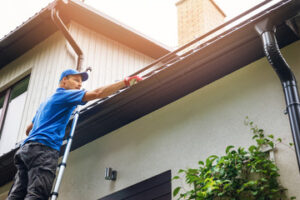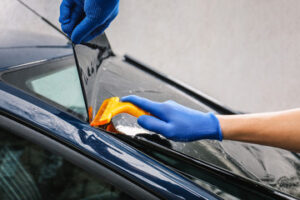Door replacement dripping might seem like a minor nuisance at first, but over time, the water that leaks from your home’s exterior doors can lead to serious problems. Moisture buildup near doors can cause rot, mold growth, and compromise the structural integrity of your home.

Fortunately, identifying and fixing water leaks around doors is usually fairly straightforward. Contact Door Replacement Dripping Springs TX for professional help.
A door’s weather stripping helps to prevent air leaks. If it’s worn out, it won’t be able to keep the cold out and the warm in, which can lead to drafts, moisture intrusion and expensive heating bills.
One easy way to tell if your weatherstripping needs replacing is to look for signs of wear. Check for gaps, hardened spots and deflation, which means it’s lost its bouncy, positive seal and is no longer doing its job. You can also do a simple dollar bill test: place a bill partway across the seal and close the door. If the bill flutters, it’s time to replace your weatherstripping.
There are many different types of weatherstripping available for your doors, depending on the size of the gaps and how much insulation you need. Foam tape is a great option for smaller gaps, as it’s self-stick and easy to apply along the edges of your door frame. It’s also inexpensive and durable, so it will last for years. Tubular rubber or vinyl is ideal for larger gaps, as it’s thicker and can help to insulate your home. It’s installed in grooves on your door frame and can last for years.
A final option is a metal sweep or threshold, which installs at the bottom of your door and helps to reduce drafts by brushing the floor when you open or close the door. These are available in a variety of styles, with metal or vinyl inserts that help to reduce drafts and resist water seepage.
If your weatherstripping is in good condition, but you still notice a draft or puddle near your door, it may be time to check and repair the caulking around the frame. This is a cheap and easy fix that can make a huge difference in your comfort.
Another way to reduce drafts is to add corner seals, which are inexpensive and easy to install. These are typically made from EPDM, a durable type of rubber that’s often used for roofs. You can purchase these at most hardware stores and they’re an affordable way to improve your energy efficiency and stop water infiltration.
Check the Door Frame
Light and air leaking around the door frame may indicate the door is not level in the frame. This could be caused by an improper installation or foundational shifting over time, and it is important to address these issues promptly to avoid any further damage. If you are unable to fix the problem yourself, you should seek help from a professional to prevent costly structural damage.
After installing the new door, you will need to check the frame’s alignment and make sure it is secure. This is a crucial step because water leaks in door frames are often caused by gaps and uneven surfaces, making them very difficult to detect. In addition, these leaks can cause rot and other problems throughout your home, and they are also costly to repair.
The easiest way to check your door frame’s alignment is by running a string diagonally from the hinge side of the door to the lock side. If the string touches at both points, the frame is aligned correctly. If the frame is not aligned, you can use wooden shims to adjust it.
It is also a good idea to caulk the gaps and cracks in the door frame to ensure moisture does not enter the home. This will improve energy efficiency and reduce heating and cooling costs, as well as increase the lifespan of your door.
While you are checking the frame, it is also a good idea to look for rust and rotting in the sill. These areas are especially vulnerable to moisture because they are exposed to the elements. It is important to caulk these areas regularly to protect them from moisture and to prolong the life of your door.
When you are done checking the frame, be sure to slide the drip cap under the house wrap and caulk and tape the angle cuts. This will keep the weather stripping from getting wet and rotted and will also help to protect the jambs from moisture. Additionally, it is a good idea to caulk the area where the sill meets the jambs and where the jambs meet the brick moulding. This will prevent water from seeping through these areas and damaging the jambs and brick moulding.
Check the Door Glass
Your operator (panel that slides) track has some means of voiding water away built into it if you have one. Check to make sure it is clear of any hairs/lint clogging it. It is also possible that there is a drain hole in the frame/glass. If the seal is gone, wipe it clean and caulk a silicon bead between the glass and the aluminum frame. Have some turps and paper towels handy as you may need to smooth the silicone bead or remove excess. If this doesn’t help, a low flowing hose directed at the panel and frame may be needed to locate the source of the leak.








